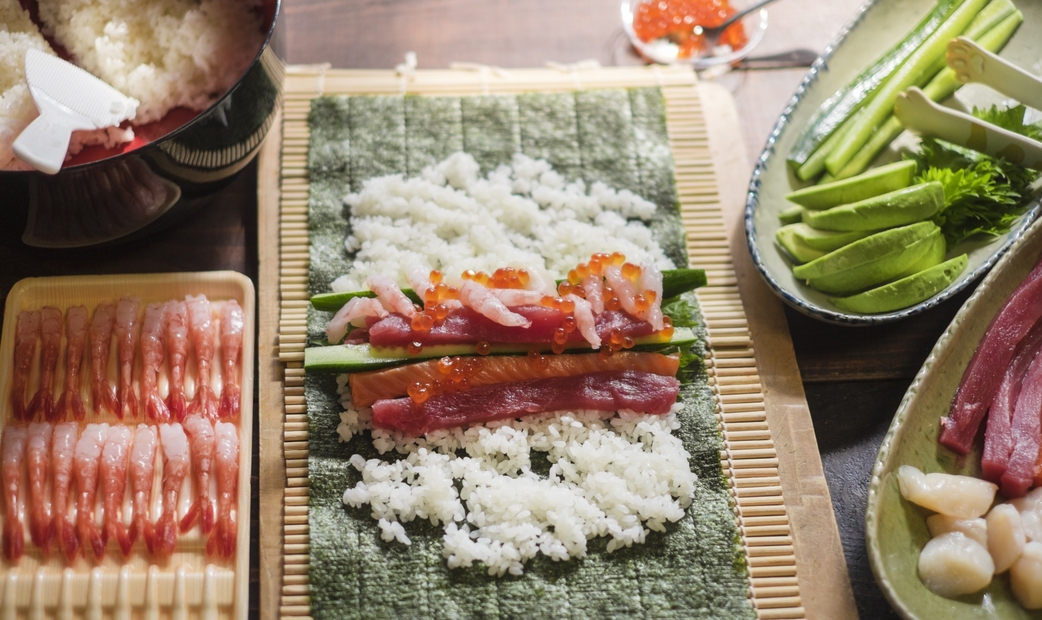
What is Maki-Sushi? How to Make Maki-Sushi and Recommended Restaurants in Japan
The OMAKASE editorial department, an official partner of Michelin, will introduce what maki-sushi is and delicious maki-sushi restaurants in Tokyo.
What is Maki-sushi?
Maki-sushi is a type of sushi made by rolling vinegared rice and ingredients with seaweed or other materials. In the U.S., when people think of sushi, many imagine maki-sushi. However, in Japan, when we refer to sushi, we are usually talking about nigiri-sushi. There are several types of maki-sushi, offering a wide variety of options.
The history of maki-sushi
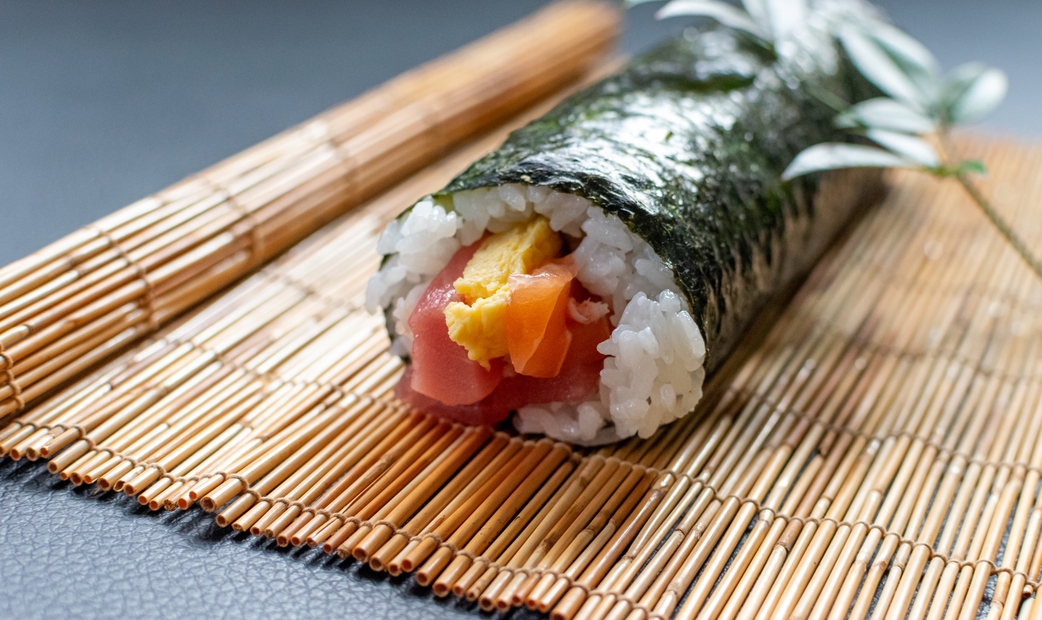
Maki-sushi is believed to have emerged in Edo about 300 years ago, which was before nigiri-sushi was invented. It was then brought to Osaka and quickly spread throughout the country. Recently, maki-sushi has also become more playful, with designs such as flower patterns and animal shapes.
Difference Between Makizushi and Nigiri Sushi
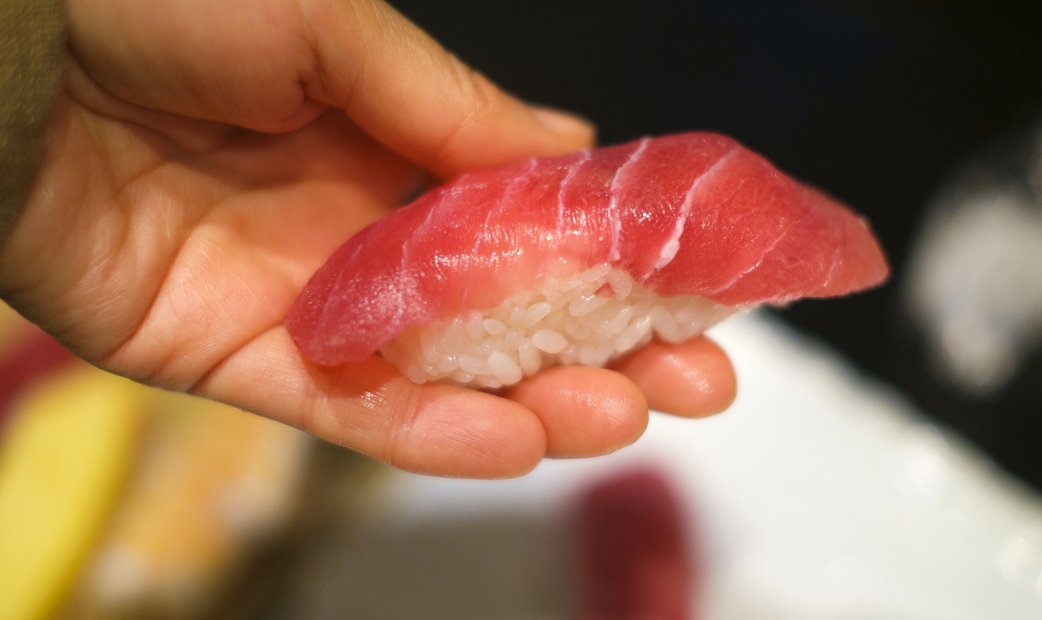
As the name suggests, maki-sushi is made by rolling shari (vinegared rice) and fillings in nori (seaweed). In contrast, nigiri-sushi is formed by pressing the neta (topping) and shari together into a single piece. In the U.S., sushi often refers to maki-sushi because it can be made without advanced culinary skills, whereas preparing nigiri sushi requires a high level of expertise.
Types of Maki-sushi
Futomaki (fat roll)
Futomaki is a type of sushi roll with a diameter of 5 cm or more, made using a full sheet of nori. It is characterized by its variety of fillings. While not commonly served at sushi restaurants, it is often available at supermarkets. Many Japanese people also enjoy making futomaki at home. Korean kimbap is a similar dish to futomaki.
Futomaki (Thick Rolled Sushi)
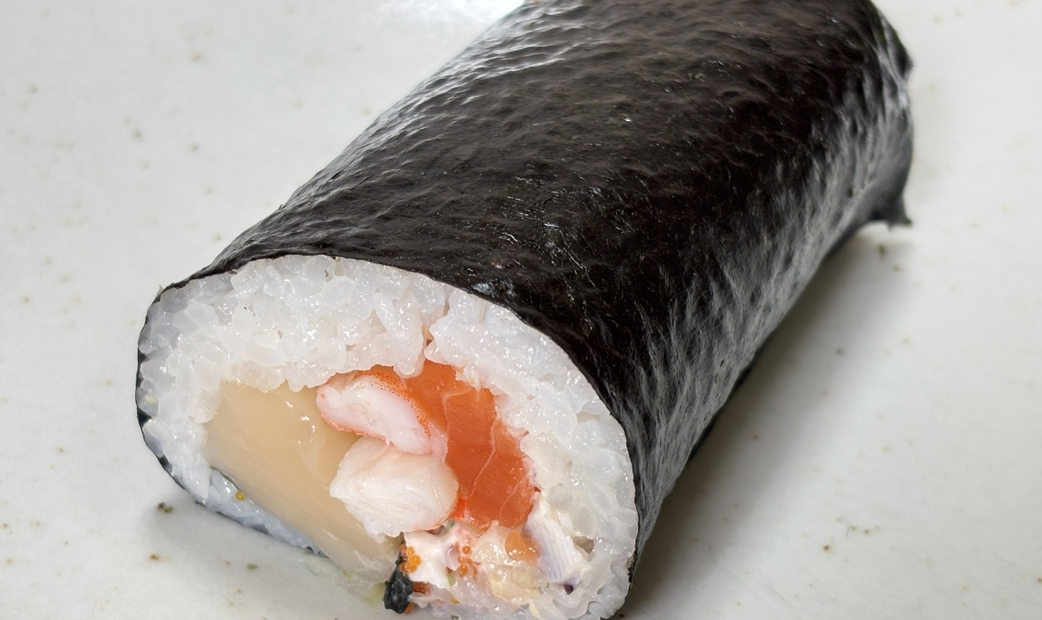
In Japan, futomaki does not usually have special names. Regardless of the ingredients, it is usually sold under general names like "futomaki" or "kaisen-maki" (seafood roll). Common fillings for futomaki include seafood (similar to sushi toppings), tamagoyaki (Japanese rolled omelette), cucumber, and sakura denbu (a pink, shredded dried fish flakes).
Eho-maki (fortune roll)
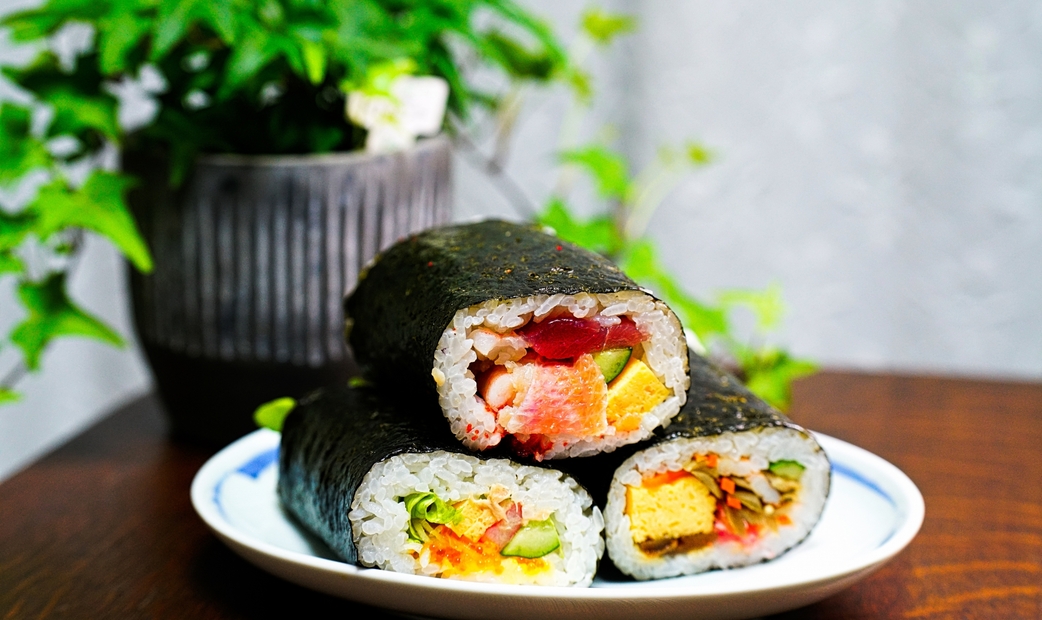
Eho-maki refers to a futomaki that Japanese people eat on 3 Feb (Setsubun). When eating eho-maki, there are certain rules to follow: you must face a specific direction, eat the entire roll without cutting it, and refrain from speaking while eating. Eating while facing a specific direction is because it is believed that the gods are in that direction, eating the futomaki without cutting it is because the act of cutting is associated with cutting ties, and eating without talking is because it is believed that good fortune will escape if you talk.
Hosomaki (thin roll)
Hosomaki is a type of maki-sushi with a diameter of about 3 cm, made using half-cut nori sheets. It basically uses only one type of ingredient. Tekka-maki (tuna roll) in particular is a classic and is widely offered from casual to high-end restaurants.
Tekka-maki
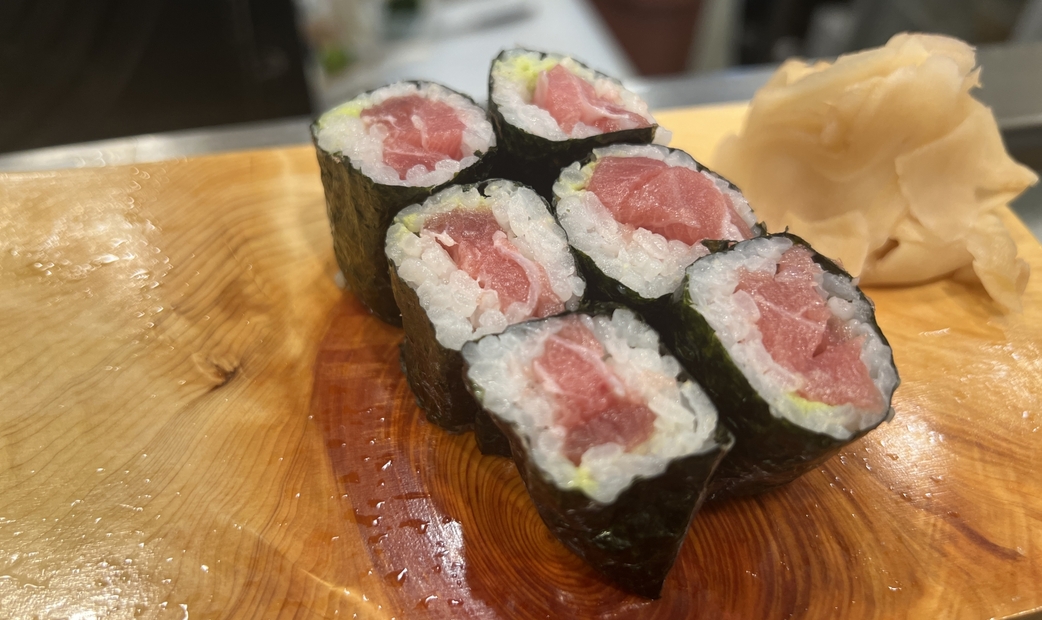
Tekka-maki is a type of hosomaki filled with tuna. The name "tekka" refers to a high temperature, like hot iron, which is similar to the color of tuna. Another theory suggests it was named after "tekka-ba" (gambling dens), where it was commonly eaten.
Kappa-maki (cucumber sushi roll)
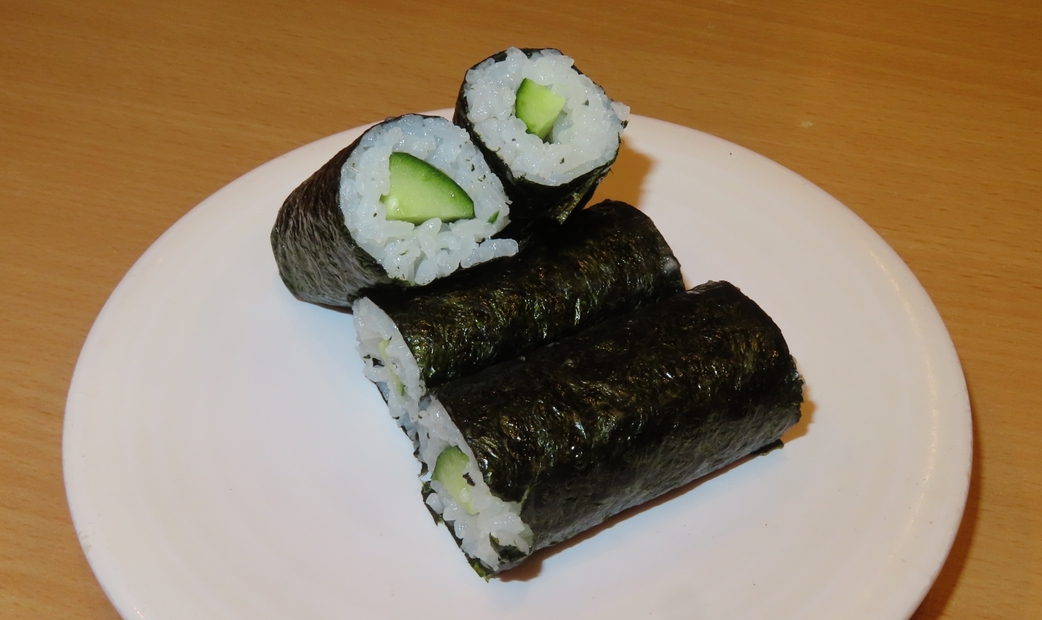
Kappa-maki is a thin cucumber sushi roll. The name "Kappa" comes from a Japanese mythical creature that lives in rivers, known for its love of cucumbers. It is characterized by the texture of cucumber and its light taste.
Shinko-maki (pickled radish sushi roll)
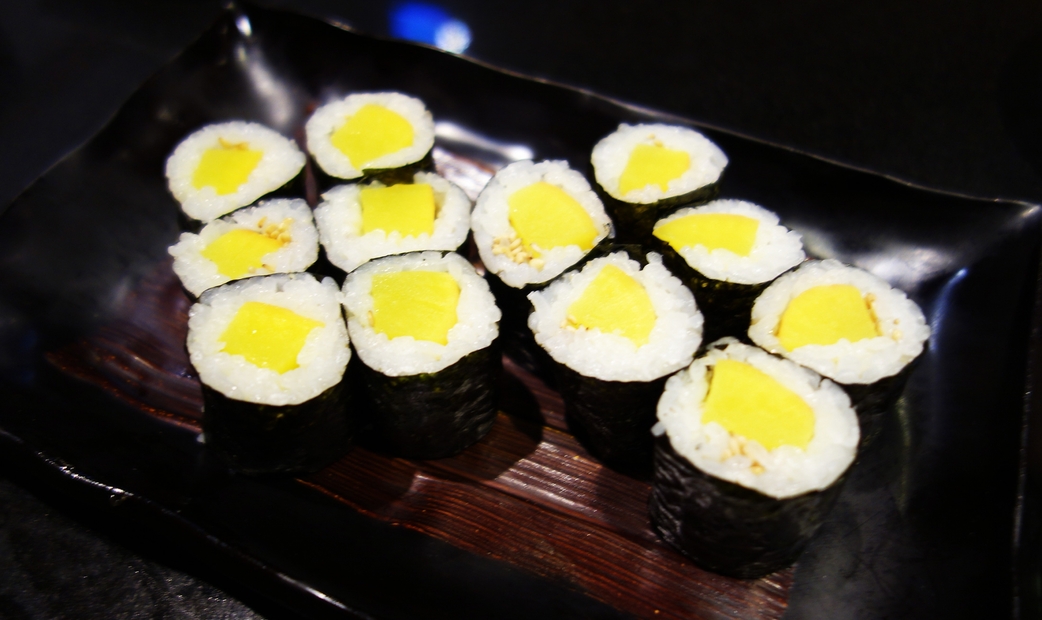
Shinko maki is type of a hosomaki made with takuan (pickled daikon radish). The name 'shinko' comes from another term for takuan. It has a sweet and salty flavor with a soft texture. Takuan is a common side dish served with rice in Japanese households. There is also a variation called "toro-taku," which combines takuan with tuna.
Kanpyo-maki (dried gourd roll)
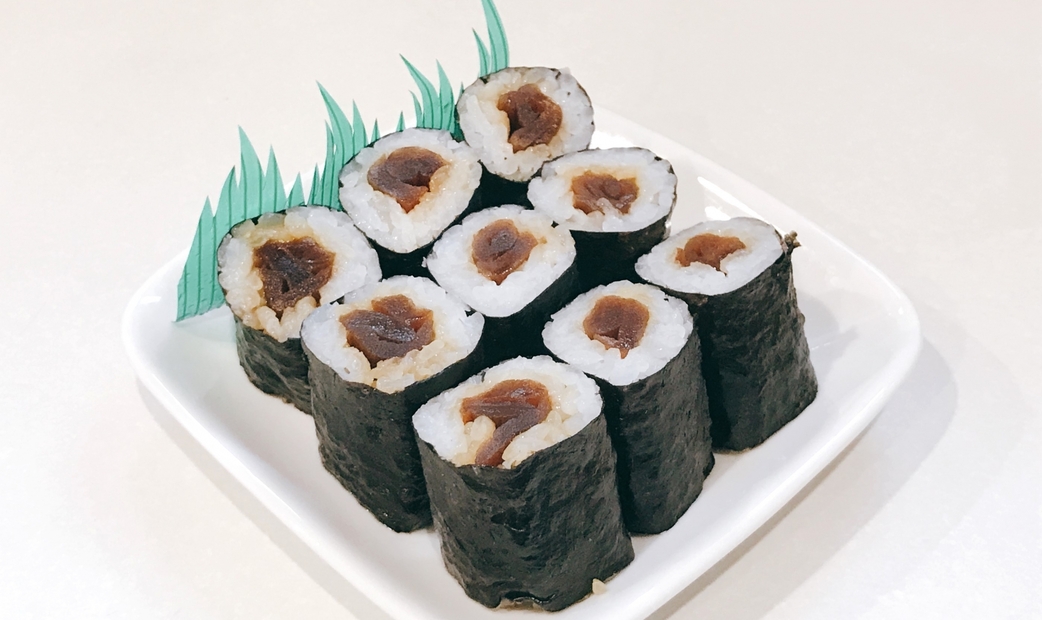
Kanpyo-maki is a classic Edomae-sushi roll. Kanpyo is made by thinly slicing and sun-drying the fruit of the calabash gourd, then rehydrating and simmering it in a sweet-salty sauce before use. In Edo (old Tokyo), when people referred to "nori-maki," they often meant kanpyo maki.
Natto-maki
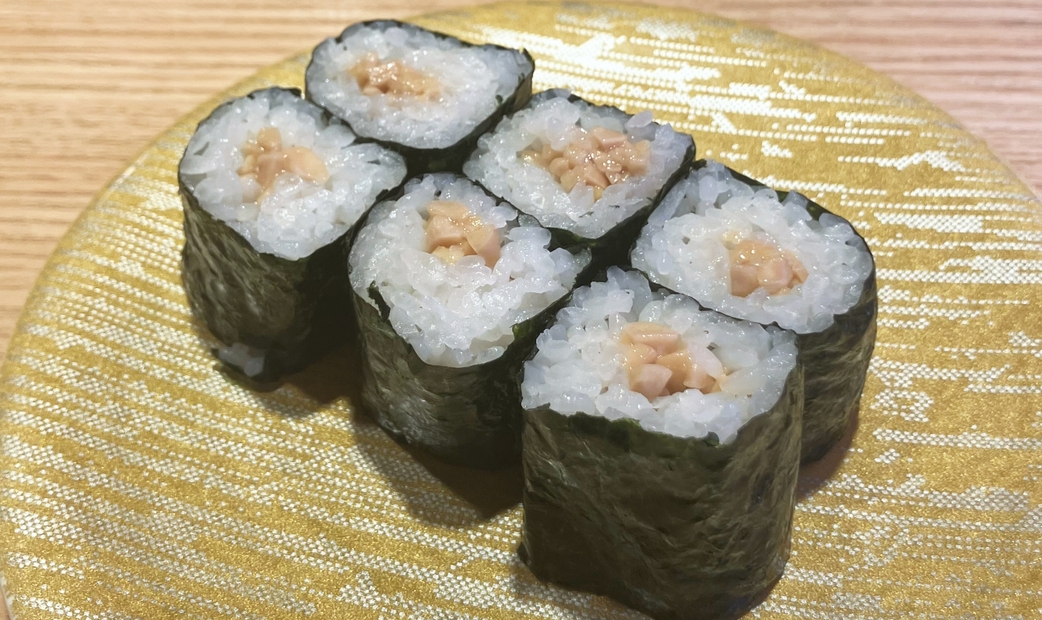
Natto maki is a type of hosomaki filled with natto (fermented soybeans), and it can also be served as gunkan-maki (battleship roll). It is sold even at convenience stores and is one of the most familiar sushi rolls for Japanese people. Natto has a unique smell and sticky texture, which many foreigners find challenging to enjoy.
Gunkan-maki (battleship roll)
Gunkan-maki is a type of sushi in which vinegared rice is wrapped in seaweed and topped with neta (toppings). It is named as "gunkan" because it looks like a battleship. Gunkan-maki does not exist in Edomae-sushi, and it was devised about 80 years ago by Ginza Kyubey, the most famous sushi restaurant in Japan, to make sea urchin into sushi. It may not be served at sushi restaurants that preserve the tradition of Edomae-sushi.
Uni gunkan (sea urchin battleship roll)
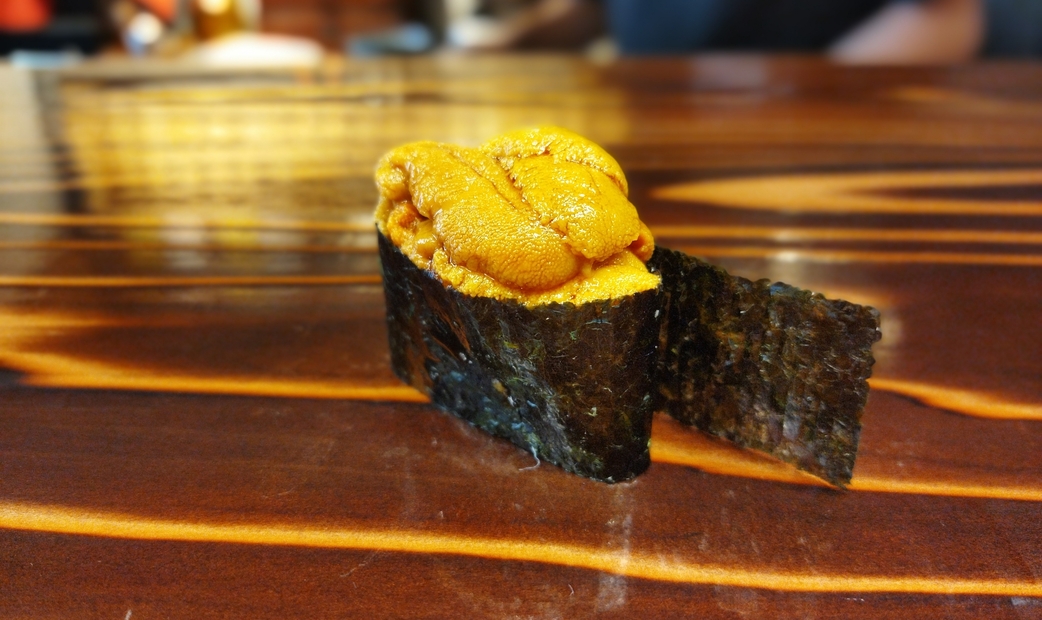
Gunkan maki topped with sea urchin. It can also be eaten at conveyor belt sushi restaurants. At high-end sushi restaurants, sea urchin may be served as nigiri instead of gunkan maki to avoid the seaweed flavor from overpowering the sea urchin flavor.
Ikura gunkan (salmon roe battleship roll)
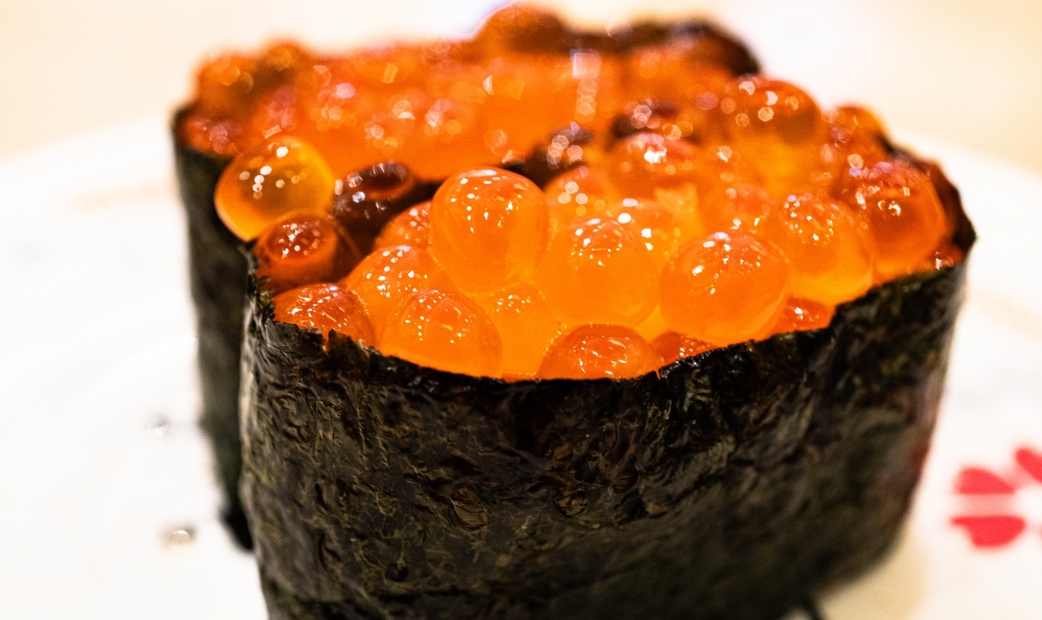
Gunkan maki topped with salmon roe (ikura). Ikura, with its unique texture and vibrant red color, is a prized sushi topping. You can also enjoy them at conveyor belt sushi restaurants.
Negitoro gunkan (chopped tuna and green onions battleship roll)
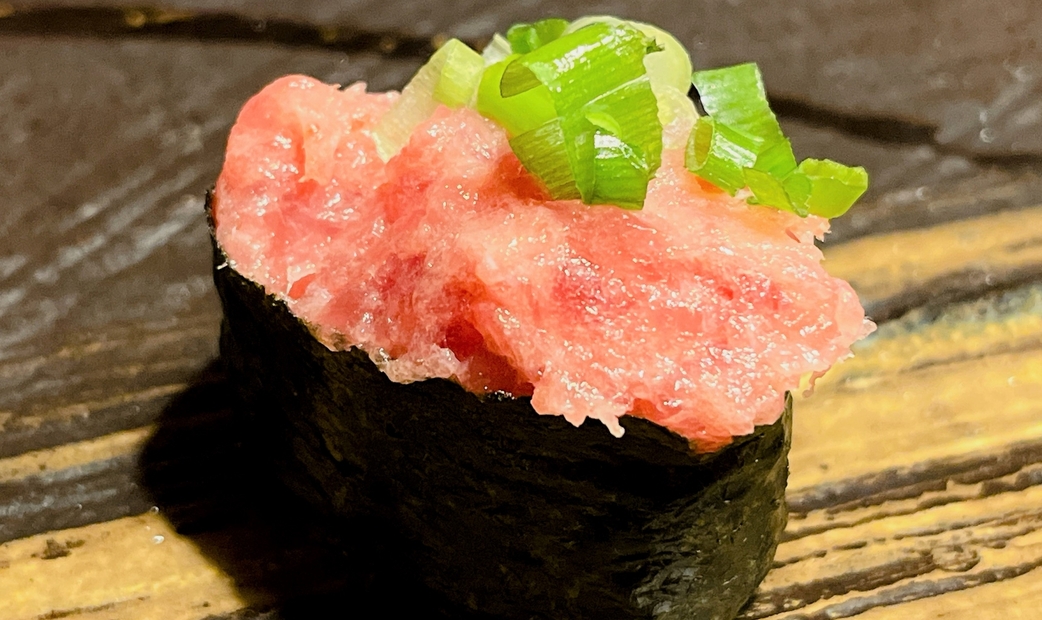
Negitoro gunkan maki is a battleship roll topped with negitoro, which is made from the scraped-off meat (near the bones, skin, and tendons) of tuna, traditionally collected using a clam shell. The name "negitoro" comes from the Japanese term "negitoru" (to scrape off), not because it contains green onions (negi), as many Japanese mistakenly believe. At high-end sushi restaurants, negitoro is sometimes served as temaki (hand-roll sushi) or nigiri.
Uramaki (inside-out rolls)
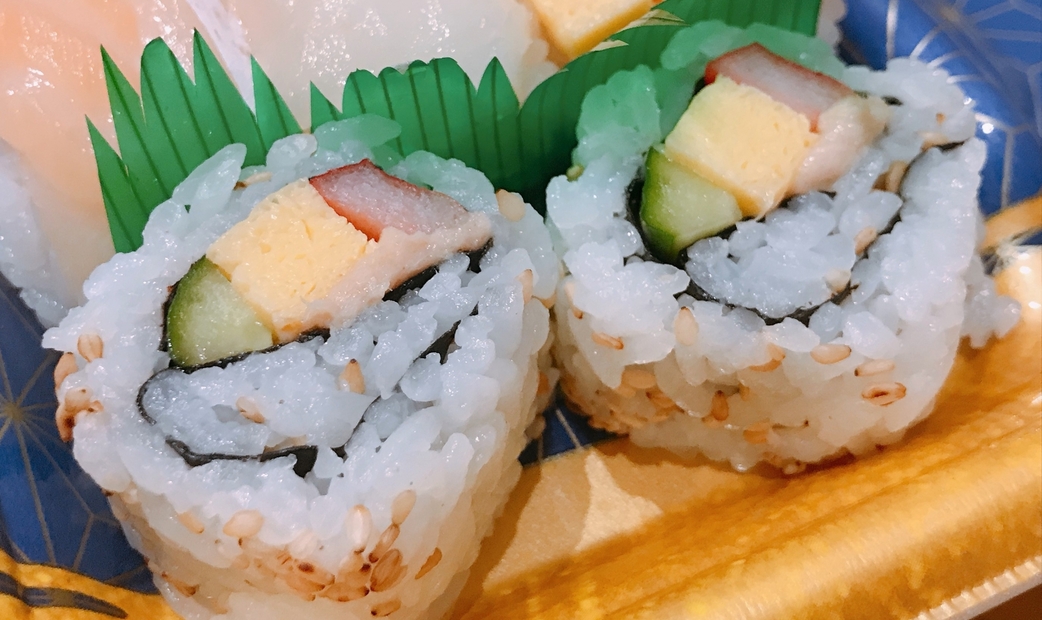
Uramaki (inside-out roll) is a type of sushi roll where the rice is on the outside, followed by nori and then the neta. In Japan, it is mostly seen at conveyor belt sushi restaurants, but it is visually striking. In the U.S., when people refer to sushi rolls, they often mean uramaki, which has inspired a wide variety of creative variations there.
California roll
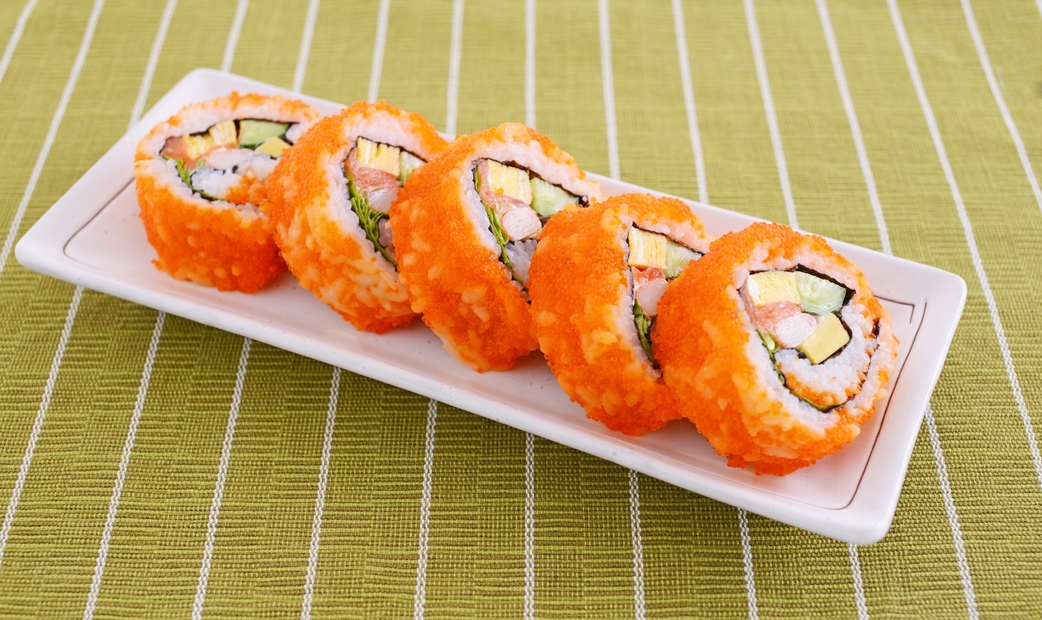
California roll is a type of uramaki made with crab (or imitation crab meat), cucumber, avocado, and white sesame seeds. Since it doesn’t use raw seafood, it’s a sushi roll that even Americans can enjoy without hesitation.
Temaki-sushi (hand-roll sushi)
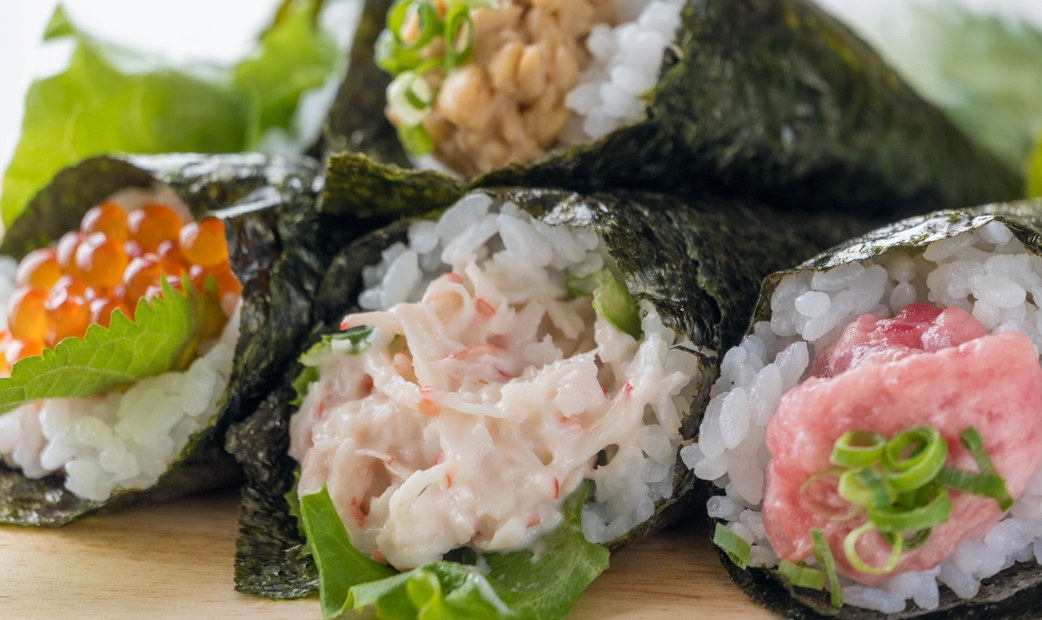
As the name suggests, hand-roll sushi is made by rolling sushi with your hands. It is easy to make, which is why it is the most common type of sushi prepared in Japanese homes. At sushi restaurants, ingredients typically used for gunkan-maki may also be served as hand-roll sushi. Common toppings are tuna, salmon, squid, and shrimp, which are often used in traditional sushi.
Tamago-maki
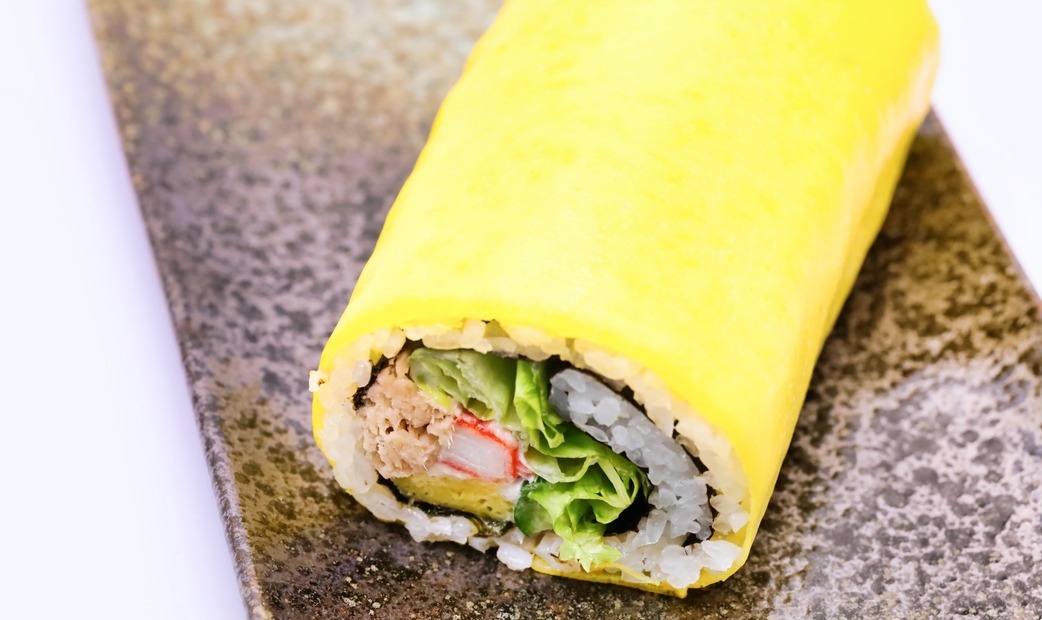
Tamago maki is a type of maki-sushi that uses a thin omelet instead of nori (seaweed). While not very common today, it was a popular sushi style during the Edo period (about 200 years ago).
How to Make Maki-Sushi
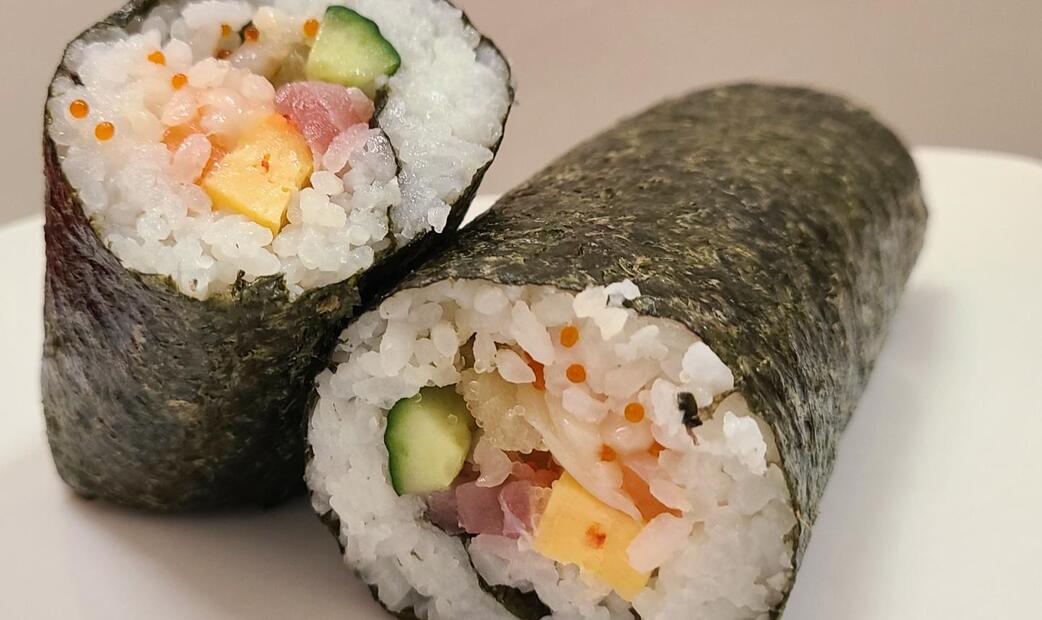
Ingredients
A variety of colorful ingredients such as cucumber (thinly sliced), omelet (cut into long strips), sashimi (tuna, salmon, etc.), imitation crab meat, and tuna mayonnaise will enhance the appearance.
Making sushi rice
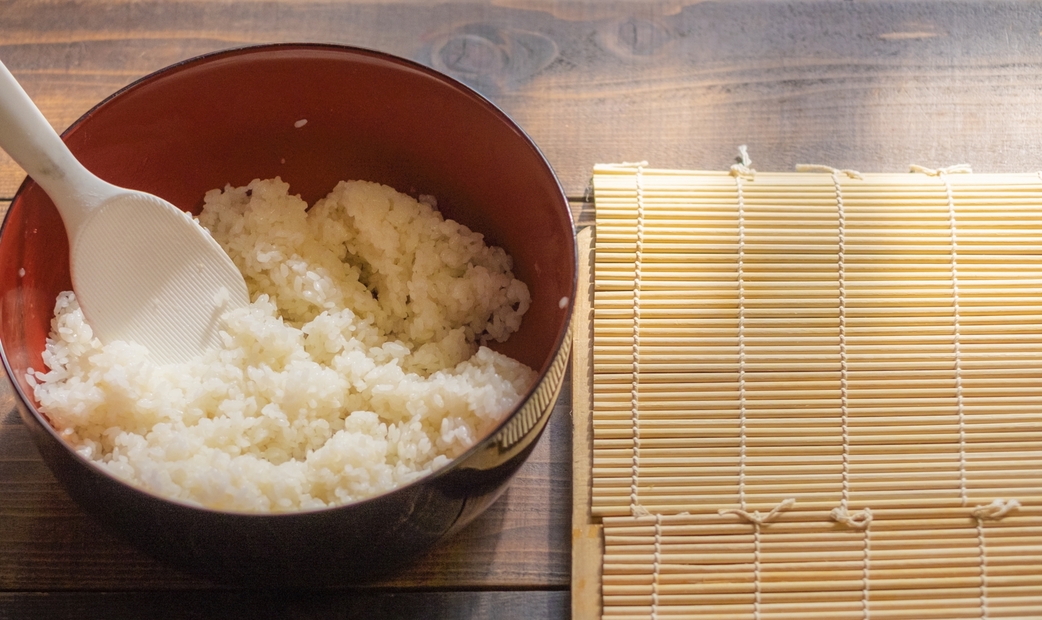
Add sushi vinegar (a mixture of vinegar, sugar, and salt) to freshly cooked rice, and mix it gently with a cutting motion. Let it cool down to an appropriate temperature (around body temperature).
Prepare the ingredients
You can use any ingredients you like, but it's a good idea to choose colorful ingredients to make the sushi look visually appealing when cut.
Place the nori on a Makisu (bamboo mat).
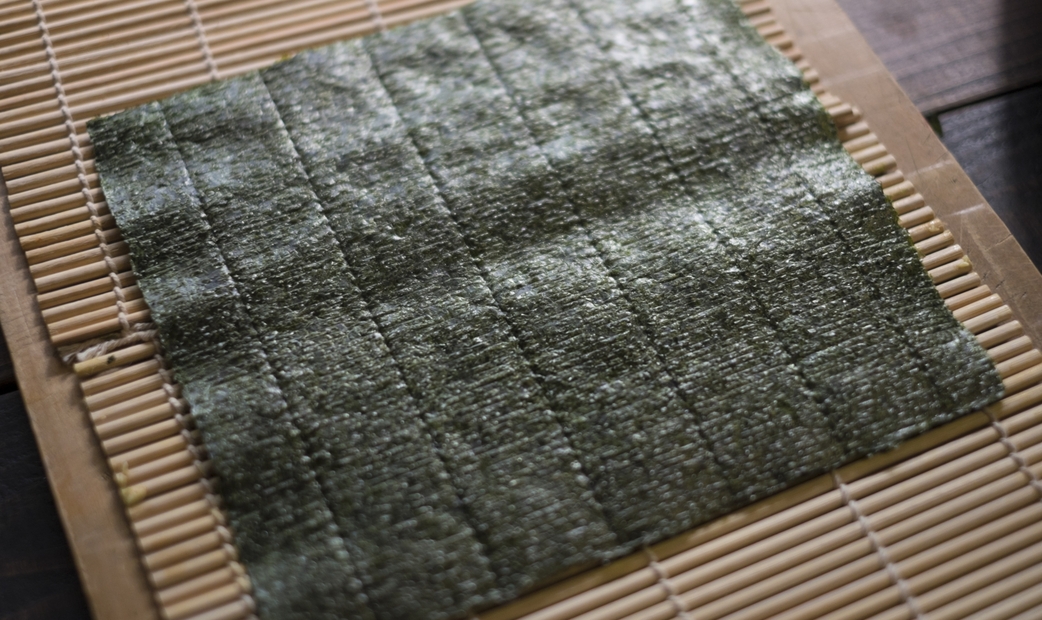
If you don’t have a bamboo mat, you can also use plastic wrap as a substitute.
A makisu is a bamboo mat used to make maki-sushi. Place the nori on the makisu with the rough side facing up.
Spread a thin layer of sushi rice over the nori, then place your desired fillings on top.

Spread the sushi rice on top of the nori, leaving about 2 cm at the far edge. Flatten the rice and evenly arrange the ingredients in the center or slightly closer to the front. If you want to make an inside-out roll, place a piece of plastic wrap over the rice after spreading it, then flip the roll so that the rice is on the outside, and arrange the ingredients on top of the nori.
Rolling it using a bamboo mat
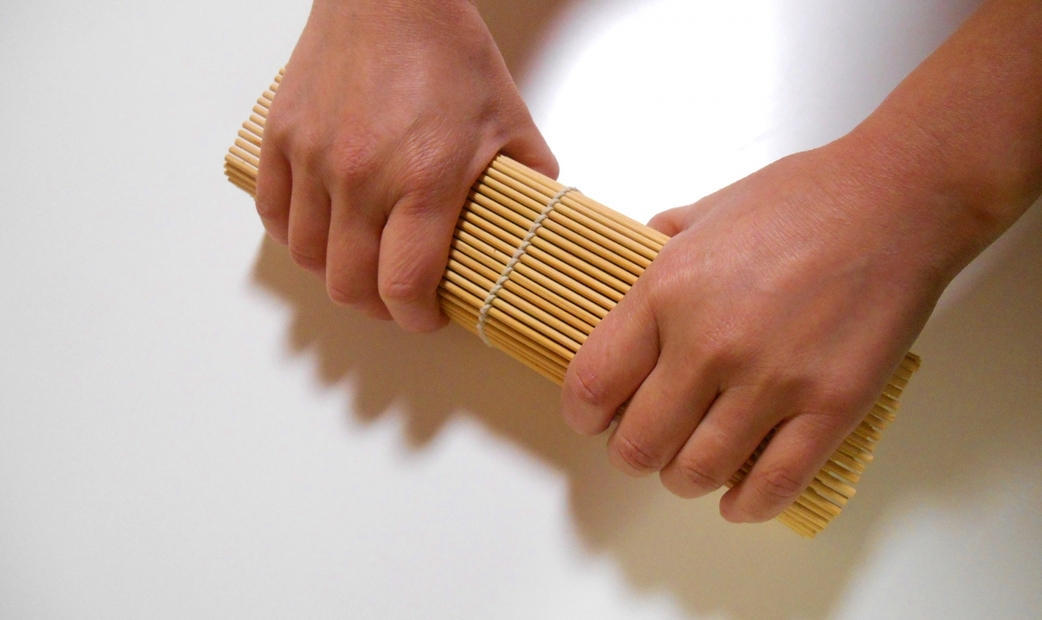
Roll tightly, starting from the front, wrapping the ingredients securely. Finally, press gently while shaping to complete the roll.
Cut it into your preferred size.

Cut the rolled sushi into bite-sized pieces, about 6 to 8 pieces.
Serving
Placing the cut side up makes the dish more visually appealing. You can serve it with soy sauce and wasabi, if desired.
Sushi restaurants in Tokyo that serve maki-sushi.
Udatsu Sushi (宇田津 鮨)
A Michelin-listed restaurant with the concept of "Sushi and Art." Using specially prepared sushi rice and the highest quality ingredients, this restaurant offers Edomae-sushi in an artistic setting. Their signature dish, the "Herb Roll," is a truly unique creation.
- Operation hours
- Lunch:
[Mon–Fri] From 12:00 PM
[Sat, Sun & Public Holidays] From 11:00 AM / From 1:00 PM
Dinner:
From 6:00 PM / From 9:00 PM - Address
- 2-48-10, Kamimeguro, Meguro-ku, Tokyo
- Nearest station
- Nakameguro Station
- Directions from station
- 5-10 minute's walk from Nakameguro Station
- Payment methods
- Cash, Credit card
- Seats
- 1F:9 Counter Seats, 1F 1 Private Room(2~4people)
2F:5 Counter Seats or 2F 1 Private Room(4~8people) - Awards
-
Michelin
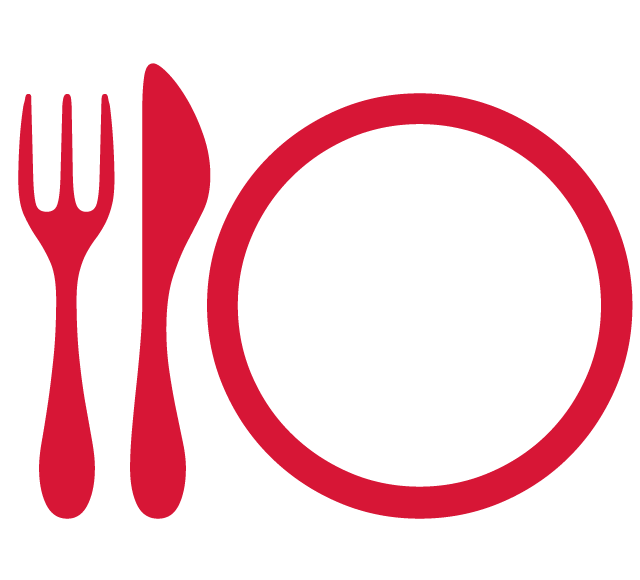
-
Jimmy5.0Posted on :11/16/2025
-
Nasser5.0Posted on :11/15/2025
-
Ronny5.0Posted on :11/06/2025
Edomae Sushi Hanabusa (江戸前鮨 英)
This Michelin one-star restaurant values the traditional techniques of Edomae-sushi. Focusing on seafood from Tokyo Bay, the chef brings out the umami through careful preparation. The specialty "zuke maguro" (marinated tuna) and tekka maki (tuna roll) are exquisite.
- Operation hours
- 5:00 PM - 10:00 PM (Last Order 8:30 PM)
- Regular holiday
- Saturdays
- Price range
- Dinner: USD 249.08 - USD 257.67
- Address
- Akasaka Residential Hotel 1F, 9-1-7,Akasaka, Minato-ku, Tokyo
- Nearest station
- Akasaka station,Nogizaka station,Roppongi Station,Roppongi 1-chome Station
- Directions from station
- 7 minutes walk from Akasaka station
8 minutes walk from Nogizaka station
9 minutes walk from Roppongi Station
10 minutes walk from Roppongi 1-chome Station - Payment methods
- Credit card available
- Seats
- Counter 8 Seats
- Awards
-
Michelin
-
Hemal Mehta5.0Posted on :11/20/2025
-
Lars Osterberg5.0Posted on :08/07/2025
-
Allen5.0Posted on :06/02/2025
Tachiguizushi Akira (立喰い寿司 あきら)
A standing sushi bar run by the famous restaurant, "Sushi Shoryu" in Shirokane-Takanawa. It offers high-quality ingredients at reasonable prices, allowing you to enjoy high-quality sushi including tuna from "Yamayuki." The Shinbashi and Tsukiji branches are also popular and the line never ends.
- Operation hours
- Lunch: 11:45 AM -
Dinner: 05:15 PM - - Regular holiday
- Irregular Holidays
- Price range
-
Lunch: USD 78.08 - USD 92.28
Dinner: USD 78.08 - USD 92.28 - Address
- B1F, 3-8-5, Shinbashi, Minato-ku, Tokyo
- Nearest station
- Shimbashi Station, Uchisaiwaicho Station
- Directions from station
- 6 minutes walk from Shimbashi Station
7 minutes walk from Uchisaiwaicho Station - Payment methods
- Cash, Credit card
- Seats
- 7 Seats
-
AC5.0Posted on :06/29/2025
-
Scott5.0Posted on :06/16/2025
-
良祐5.0Posted on :05/18/2025


